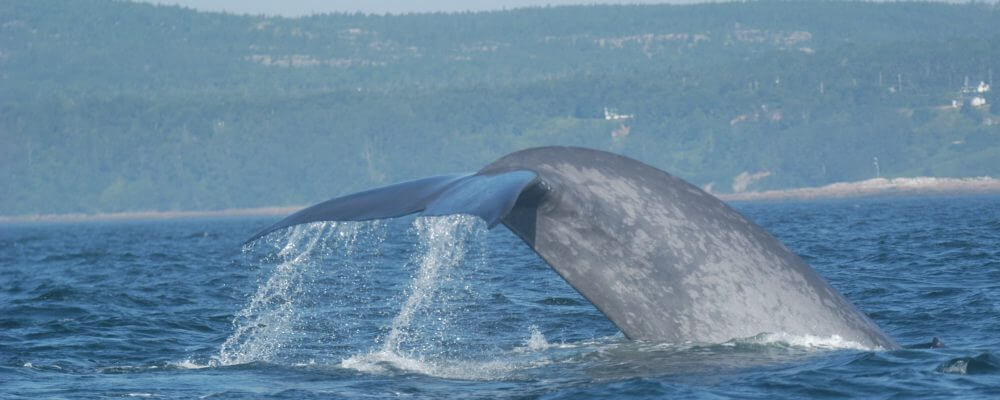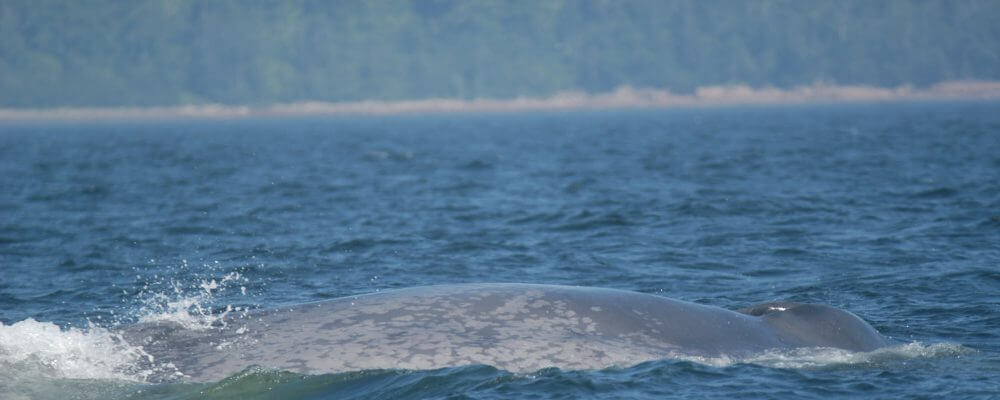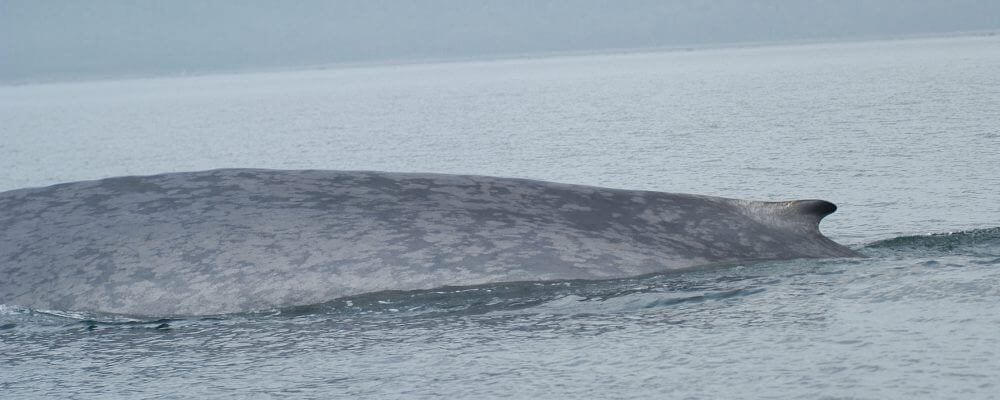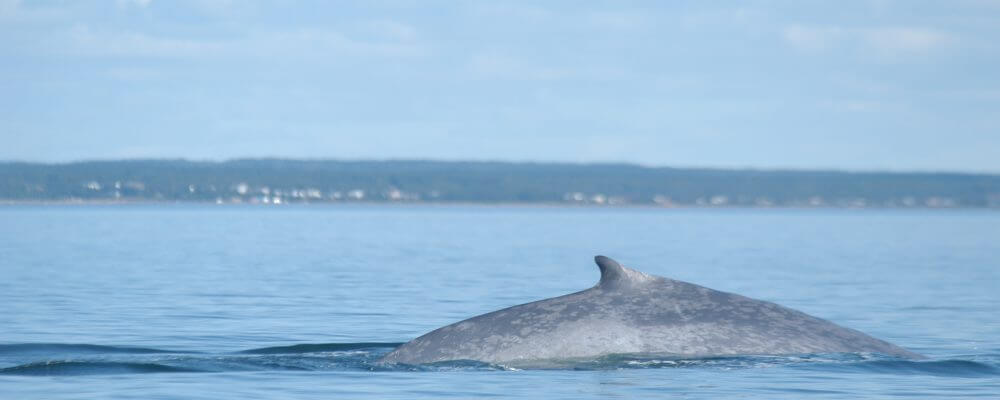King Fisher
Blue Whale


-
ID number
B235
-
Sex
Female
-
Year of birth
Unknown
-
Known Since
1990
Distinctive traits
King Fisher owes her name to the shape resembling a kingfisher on the front of her left flank.
She is easily recognizable thanks to the large indentation on her left pectoral fin. King Fisher is also one of the 15 to 18% of blue whales in the St. Lawrence that stick their tails out when diving.
Life history
King Fisher has been known to researchers at the Mingan Island Cetacean Study (MICS) since 1990. She has always been sighted in the estuary.
She was photographed with a calf by the Mériscope team near Sainte-Anne-de-Portneuf on June 29, 2003. On July 8, the GREMM team performed a biopsy on the calf.
Fat samples taken from the mother and calf will reveal the nature and number of toxic contaminants present in their bodies and characterize their transmission from mother to calf.
Also in 2003, she carried a data logger on her back for 10 hours as part of the blue whale tracking project conducted by the GREMM and Maurice Lamontagne Institute teams of Fisheries and Oceans Canada.
Observations history in the Estuary
Years in which the animal was not observed Years in which the animal was observed
Latest news from the publications Portrait de baleines
King Fisher is a blue whale, listed under code B235 by MICS. The color pattern of this giant (the largest animal on Earth), composed of gray and bluish spots, resembles a mosaic. Researchers use this unique and characteristic pigmentation pattern to photo-identify this species. Sometimes, a particular shape can be detected, which helps to name the animal. This is the case for B235, which has a kingfisher shape on the front of her left flank.
King Fisher has been known to MICS researchers since 1990. This female was observed in 1993, 1994, 1996, and then every year from 2002 to 2005. She has always been seen only in the estuary. This year, she was photographed by the Mériscope on June 26 in a deep part of the head of the Laurentian Channel, opposite the Romaine River. When she feeds at the surface with her mouth open and shows her pectoral fins and belly, she is easily recognizable by a large notch on her left pectoral fin. In addition, King Fisher sticks out her tail when diving: only 18% of blue whales in the St. Lawrence exhibit this behavior.
King Fisher is well known to researchers and has already contributed greatly to their knowledge of this endangered species. A biopsy was performed on her in 2002. Before the results of genetic analyses confirmed King Fisher’s sex, it was suspected that she was a female: she was photographed with a calf by the Mériscope team on June 29, 2003, near Sainte-Anne-de-Portneuf. On July 8, 2003, the GREMM team performed a biopsy on the calf. Fat samples taken from the mother and her calf will reveal the nature and number of toxic contaminants present in their bodies and characterize their transmission from mother to calf. As for the calf, genetic analysis will reveal its sex and probably its parentage, provided that a biopsy was performed on its father. In 2003, she carried a data logger on her back for 10 hours (Estuary News vol. 2, no. 12) as part of the GREMM and IML-DFO project (Researchers at Work vol. 4, no. 9).
Photos courtesy of © Mériscope





